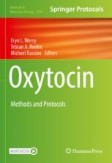Search
Search Results
-
The Effects of Piracetam and Noopept on NMDA- and 5-HT2A-Receptors in the Brains of Mice with Congenital β-Arrestin Deficiency
Abstract —Based on the special role of the β-arrestin signal protein in the processes of neuronal plasticity and receptor activation, the effects of...

-
Design and discovery of a high affinity, selective and β-arrestin biased 5-HT7 receptor agonist
Compound 1c , 5-chloro-2-(2-(3,4-dihydroisoquinolin-2(1H)-yl)ethyl)-2,3-dihydro-1H-inden-1-one was previously reported from our laboratory showing...

-
Atypical chemokine receptor 3 induces colorectal tumorigenesis in mice by promoting β-arrestin-NOLC1-fibrillarin-dependent rRNA biogenesis
Atypical chemokine receptor 3 (ACKR3) has emerged as a key player in various biological processes. Its atypical “intercepting receptor” properties...

-
Use of BRET to Measure β-Arrestin Recruitment at Oxytocin and Vasopressin Receptors
Bioluminescence resonance energy transfer (BRET) is a cutting-edge biophysical technique used for exploring G protein-coupled receptor (GPCR)...
-
β-arrestin 2 is essential for fluoxetine-mediated promotion of hippocampal neurogenesis in a mouse model of depression
Over the last decade, the roles of β-arrestins in the treatment of neuropsychological diseases have become increasingly appreciated. Fluoxetine is...

-
The multifaceted functions of β-arrestins and their therapeutic potential in neurodegenerative diseases
Arrestins are multifunctional proteins that regulate G-protein-coupled receptor (GPCR) desensitization, signaling, and internalization. The arrestin...

-
The mechanism of 25-hydroxycholesterol-mediated suppression of atrial β1-adrenergic responses
25-Hydroxycholesterol (25HC) is a biologically active oxysterol, whose production greatly increases during inflammation by macrophages and dendritic...

-
Correction to: In vitro structure–activity relationship determination of 30 psychedelic new psychoactive substances by means of β-arrestin 2 recruitment to the serotonin 2A receptor
It has been brought to the authors’ attention that Fig. 1 of “In vitro structure–activity relationship determination of 30 psychedelic new...

-
Characterization of behavioral changes in T-maze alternation from dopamine D1 agonists with different receptor coupling mechanisms
RationaleDopamine D 1 receptor agonists have been shown to improve working memory, but often have a non-monotonic (inverted-U) dose–response curve....

-
In vitro structure–activity relationship determination of 30 psychedelic new psychoactive substances by means of β-arrestin 2 recruitment to the serotonin 2A receptor
Serotonergic psychedelics, substances exerting their effects primarily through the serotonin 2A receptor (5-HT 2A R), continue to comprise a...

-
Understanding the Molecular Regulation of Serotonin Receptor 5-HTR1B-β-Arrestin1 Complex in Stress and Anxiety Disorders
The serotonin receptor subtype 5-HTR 1B is widely distributed in the brain with an important role in various behavioral implications including...

-
GPCR Intracellular Loop Regulation of Beta-Arrestin-Mediated Endosomal Signaling Dynamics
G protein-coupled receptors (GPCRs) are currently appreciated to be routed to diverse cellular platforms to generate both G protein-dependent and...

-
Visualizing Sphingosine-1-Phosphate Receptor 1(S1P1) Signaling During Central Nervous System De- and Remyelination
Multiple sclerosis (MS) is an inflammatory-demyelinating disease of the central nervous system (CNS) mediated by aberrant auto-reactive immune...

-
Repeated social defeat promotes persistent inflammatory changes in splenic myeloid cells; decreased expression of β-arrestin-2 (ARRB2) and increased expression of interleukin-6 (IL-6)
BackgroundPrevious studies suggest that persistent exposure to social stress in mammals may be associated with multiple physiological effects. Here,...

-
β-Arrestin 2 mediates arginine vasopressin-induced IL-6 induction via the ERK1/2-NF-κB signal pathway in murine hearts
Evidence to date suggests that β-arrestins act beyond their role as adapter proteins. Arginine vasopressin (AVP) may be a factor in inflammation and...

-
Possible mechanism for improving the endogenous immune system through the blockade of peripheral μ-opioid receptors by treatment with naldemedine
BackgroundIt has been considered that activation of peripheral μ-opioid receptors (MORs) induces side effects of opioids. In this study, we...

-
Opioid Receptors and Neuronal Signal Transduction
This chapter provides information on the classification, structure, and properties of the main opioidOpioids receptor subtypes, their canonical and...
-
Pharmacologic profile of ITI-333: a novel molecule for treatment of substance use disorders
RationaleMedications are urgently needed to treat symptoms of drug withdrawal and mitigate dysphoria and psychiatric comorbidities that drive opioid...

-
β-arrestin-2 up-regulates toll-like receptor 2 signaling and inhibits apoptosis in human endometrial cancer heterotransplants in nude mice
Backgroundβ-arrestin-2(Arr2) functions as an anti-apoptotic factor and affects cell proliferation, but its downstream molecular pathway in...

-
Signaling profiles in HEK 293T cells co-expressing GLP-1 and GIP receptors
Glucagon-like peptide-1 (GLP-1) and glucose-dependent insulinotropic polypeptide (GIP) are regarded as ‘incretins’ working closely to regulate...

